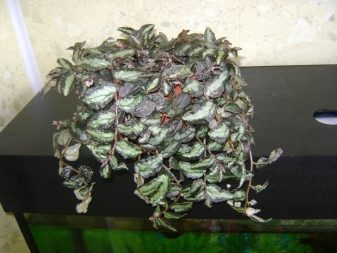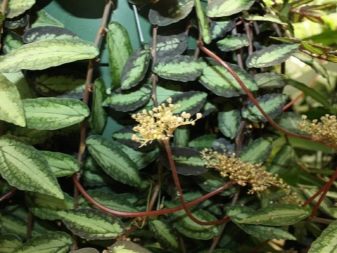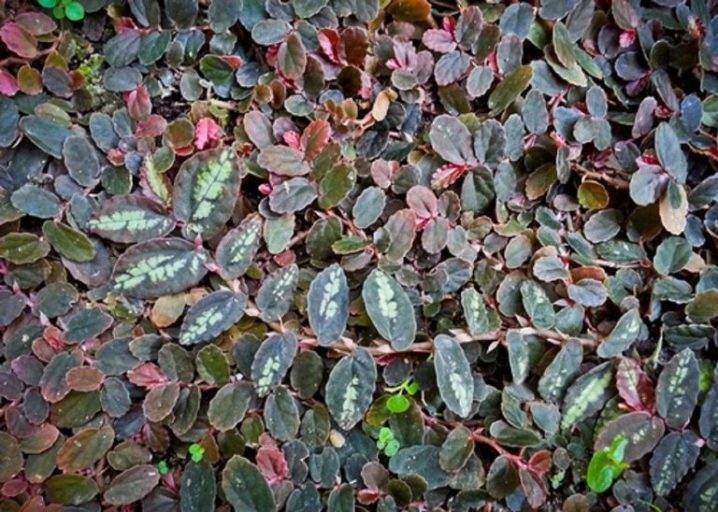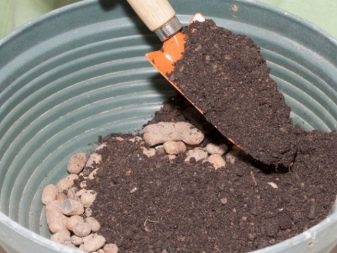Pellionia: characteristics, subtleties of cultivation

Pellionia belongs to the genus of flowering plants of the Nettle family, which includes more than 20 species of various grasses and shrubs. It is believed that the name of this plant is derived from the surname of the famous French navigator of the 19th century, Alphonse de Pellion. In the wild, Pellionia is found in tropical and subtropical climates in Southeast Asia. There she beautifully covers the soil with her vines-like shoots. Despite the fact that this plant belongs to the Nettle family, it is safe for humans with direct tactile contact.

What does Pellionia look like?
This perennial evergreen plant most often has creeping shoots and a superficial fibrous root system. Stems, strongly branching at the base of the plant, as a rule, are not higher than 50 cm.
Pellionia is appreciated by flower growers for decorative oval leaves of green, gray, silver or bronze color (sometimes with a marble pattern), with a brown-burgundy edging.
This plant blooms with small white flowers, similar to bells, which are collected in capitate or umbellate inflorescences.


Popular types
Several types are famous.
Pellionia Daveauana
She has strongly branching creeping shoots with a reddish tint, smooth to the touch. Brownish-green leaves with a light stripe, alternately arranged along the central vein, oval in shape. They grow in length up to 6 cm. Along the edges of the leaves are purple-black, and their back has a gray-greenish color with a red tint and a rough surface. On each leaf, at the base, you can see a pair of scarious reddish stipules. Small greenish flowers are formed in summer.

Pellionia beautiful or beautiful (Pellionia pulchra)
Outwardly, it resembles the Davo Pellionia, but has a more miniature size. Elliptical leaves grow only 2-4 cm in length. Above, their color is silvery, along the veins it is dark green. The resulting marble-like ornament is very beautiful. On the underside, a pink-green leaf blade with red-violet veins is covered with short hairs. Flowers are small, pale, not very noticeable.

Pellionia short-leaved (Pellionia brevifolia)
Has a creeping stem, branchy pubescent shoots of a reddish color. On ovoid leaves there is an asymmetrical pattern of a grayish-silvery shade. Subulate stipules and cuttings up to 2 cm long. This species is characterized by small inflorescences with flowers of 2 sexes, but sometimes monoecious.

Creeping Pellionia (Pellionia repens)
This species has creeping fleshy stems, which in the wild can easily cling to rocks or walls and climb to a height of 50 cm. Leaves are oval, 4–5 cm long, dense in structure. In the middle, the color of the leaf is light green, and around the edges it is bronze-green. Under favorable conditions, this Pellionia lives from 4 to 5 years. It blooms only in its usual natural environment.

At home, it is recommended to breed Davo Pellionia and beautiful Pellionia.
Home care
Pellionia is an easy plant to grow at home or in an apartment. But so that she does not lose her decorative effect, when leaving, the recommendations of experienced florists should be taken into account.
Lighting
Pellionia belongs to shade-loving houseplants. But partial shade suits her best.Ideally located at the back of a room with good lighting. From exposure to direct sunlight, the leaves curl up and dry out.
With a lack of light, foliage can quickly turn pale and lose its attractiveness.

Watering mode
The plant prefers frequent, abundant watering. It is recommended to do this with soft, settled water just above room temperature. The ground should be constantly slightly damp. But it is imperative to pour out the accumulated water from the pan to avoid root rot.

Temperature
The most comfortable temperature for this plant is up to + 25 ° C in summer and not lower than + 16 ° in winter. Pellionia should be carefully protected from drafts, but provide fresh air in the room. In summer, it can be taken out into the fresh air and placed in the shade.
If your plant is on the windowsill in winter, then do not let the leaves come into contact with cold glass.


Air humidity
Like any tropical plant, Pellionia needs high air humidity. Be sure to spray the leaves every day. You can also put the plant on a pallet with pebbles or expanded clay: when kept in a dry room, the leaves dry out quickly.


Top dressing
During the period of active growth, mineral fertilizers can be applied 2 times a month, but a weakly saturated solution is recommended. Organic fertilizers in Pellionia noticeably increase the brightness of the pattern on the leaves.


Pruning and replanting
In spring, Pellionia can be cut off, leaving shoots 8 cm long. This plant requires transplanting every 2 years, as it grows quickly and loses its decorative effect. The pots should be wide, but not very deep. Loose soil is recommended with the addition of perlite or vermiculite.
You can make an earthen mixture yourself, taking 2 parts of leafy soil and 1 part of peat, humus and perlite each, not forgetting to provide good drainage.


Reproduction methods
This plant can be propagated by division and seeds, but the best and most effective way is cuttings. To do this, cut off the apical cuttings, which have 2-3 internodes, and put them in a container with boiled water at room temperature. The roots grow quickly. When their length reaches 0.5 cm, you can plant the plant in an earthen mixture.
Cut cuttings can be planted directly into the soil, they take root quickly and without any problems.


Possible plant diseases
Pellionia is very resistant to various diseases. But sometimes it can be affected by aphids and whiteflies, which start up in dry air and high indoor temperatures. For prevention purposes, you should arrange a shower for the plant, pouring warm water. If you find pollen on a flower that looks like flour, then these are traces of a whitefly, and Pellionia must be treated with Aktara or Fitoverm preparations... If aphids are present, remove the affected areas and treat the plant with a mild soapy solution.
Unfortunately, Pellionia is not a popular houseplant these days, although it looks beautiful in compositions with other flowers, it is no less beautiful as an ampelous plant in hanging pots and is effective as a ground cover plant in combination with flowering specimens. In addition, Pellionia perfectly cleans the air, destroys harmful microbes and microorganisms.


See below about caring for Pellionia.























The comment was sent successfully.